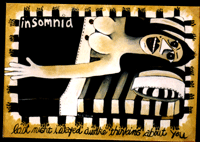The Power of Thecla and Her Story
In the Early Church
Without a doubt, Thecla and Paul were key symbols for the ideals of early Christian ascetic movements, especially in Egypt, Syria, and Armenia. Obviously the women's ascetic movement did not end, even though the Pastoral Epistles declared women's salvation was bearing children. Christian ascetic practices by both men and women continue to this day.
The power of Thecla's story spread throughout early Christianity. Following are just a few illustrations. Several early church fathers from both the East and West praised Thecla as a model of feminine chastity. She became "venerated from the shores of the Caspian almost to the shores of the Atlantic. In the fourth century a church in Antioch of Syria was dedicated to Thecla. Another church in Eschamiadzin, Iberia, from the fifth century has a wall design showing Paul preaching to her. In Egypt [are several examples of art]. In Rome, scholars found a sarcophagus graced by a relief portraying Paul and Thecla traveling together in a boat."4 At least three places claim her burial place: Meryemlik [Ayatekla], Turkey; Maalula, Syria; and Rome, Italy.
A Statue of Saint Thecla
Saint Thecla - Crypt in Turkey
Martyrdom of St Thecla
Thecla, the first women martyr,
Because of the Angels:A Study of the Veil in the Christian Tradition
Roman Catacombs
The convent of St Thecla in Maalula, a small village one hours drive north from Damascus. The inhabitants of Maalula still speak Aramaic, the same language that Jesus spoke.
Christ the Magician----
Jesus Had Long Hair and a Beard ----
Saturday, June 21, 2008
Subscribe to:
Post Comments (Atom)



No comments:
Post a Comment